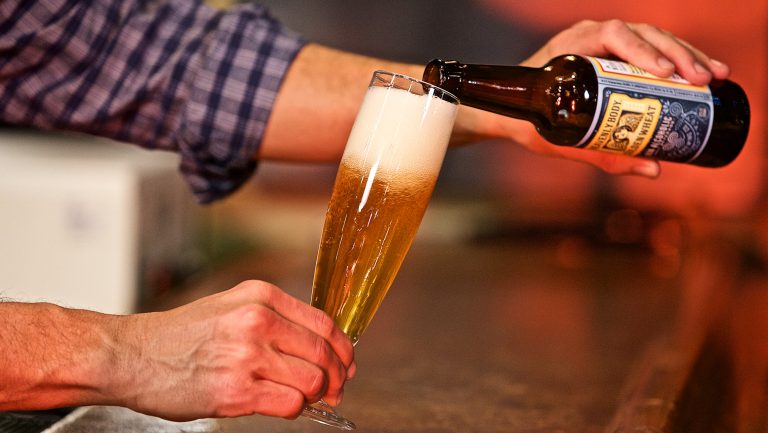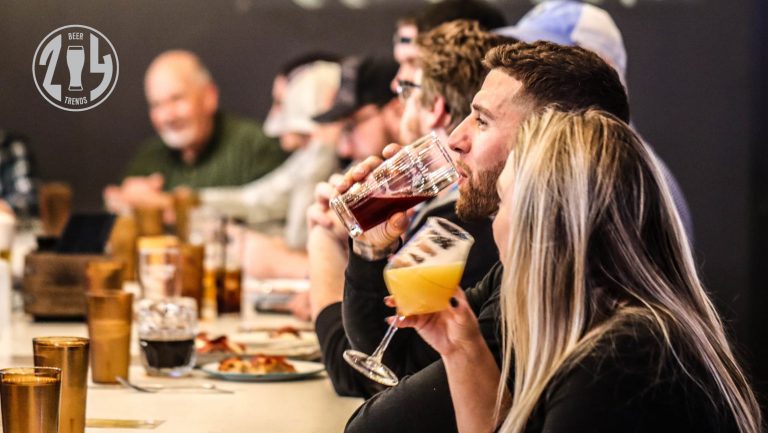Strangers from throughout the U.S. frequently send gushing notes of gratitude to Philip Brandes, the founder and head brewer of Bravus Brewing Company in Costa Mesa, California. “I cried tears of joy and danced around the house for days,” reads one missive. “I just want to say thank you. Thank you, thank you, thank you!” The messages, unlike most these days, actually come handwritten, often on stationery, to Brandes’s physical mailbox.
Bravus Brewing is one of approximately five small independent breweries in North America to emerge since 2016 that exclusively brew non-alcoholic craft beer in styles—and flavors—that range from amber ale to barrel-aged bourbon stout. Brandes started brewing non-alcoholic craft beer in 2015 after watching a sober friend bring cases of a mass-produced brand to get through a week’s vacation in Mexico. He began selling his alcohol-free beer in 2016. The segment of the market that likes to drink quality alcoholic beverages but can’t—those who are in recovery, pregnant, breast-feeding, or taking medication that can’t be consumed with alcohol—provides huge potential for craft brewers of non-alcoholic beer.
Supported by the trend among millennials of either abstaining from alcohol or imbibing less than older generations, breweries across the country are increasingly turning to non-alcoholic brews to reach new consumers. Another demographic that this category can serve is older Americans. According to the National Institute on Alcohol Abuse and Alcoholism, only 40 percent of Americans ages 65 and older drink alcohol, compared with the broader category of American adults ages 18 years or older, 70 percent of whom report having had a drink in the past year. Though seniors may not drink as much alcohol as younger Americans, Brandes observes that a number of them still enjoy the taste of good beer. He estimates that baby boomers and seniors make up about half of his customer base.

Don’t miss the latest drinks industry news and insights. Sign up for our award-winning newsletters and get insider intel, resources, and trends delivered to your inbox every week.
From European to American Markets
The market research and management consulting company Global Market Insights predicts that the global market for non-alcoholic beer, which in 2016 was worth more than $13 billion, will nearly double, to $25 billion, by 2024. Europe has been leading the charge—brands such as Guinness, Mikkeller, Heineken, and BrewDog have already released non-alcoholic beers in the EU, along with a few products that have entered the U.S. over the past several months.
Though prices vary, a retail buyer should expect to spend upwards of $10 for an alcohol-free six-pack. Anheuser-Busch InBev promises to fill at least 20 percent of its global portfolio with non-alcoholic beer by 2025, and this year it unveiled a non-alcoholic version of the normally 6.6% ABV Belgian Leffe Blonde.
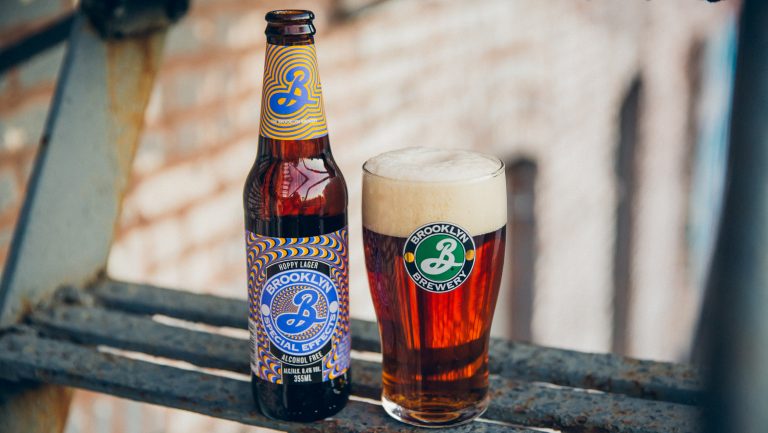
Brooklyn Brewery in New York City expects to launch its five-month-old non-alcoholic Special Effects stateside this fall. It debuted the hoppy lager in Sweden at the end of last year and will introduce the beer into seven more European nations by the end of 2019. Special Effects has already outperformed projections, says Brooklyn Brewery’s CEO, Eric Ottoway, who notes that non-alcoholic beer makes up 5 percent of the overall beer sales category in Sweden and 10 percent in Spain. Euromonitor reports that non-alcoholic beer performed far better than any other beer category in Western Europe from 2012 to 2017.
Ottaway knows the sell won’t be nearly as easy in the U.S., where despite increased interest and production, non-alcoholic beer has less than .5 percent market share of the beer category. It isn’t just the reputation non-alcoholic beer has for bad flavor—a judgment driven by generic versions released by big breweries—that’s holding the category back in the U.S. Europeans tend to embrace healthier, more progressive attitudes about their drinking than do Americans, says Ottoway, citing a younger drinking age and severe penalties for drunk driving as reasons Europeans take drunkenness more seriously. “For decades in this country,” he says, the message has been that “if you’re not drinking, it’s like there’s something wrong with you. In Europe, it’s completely normal to drink a soda.”
Ottaway expects hand-selling to help move Special Effects in the U.S. at first. He’ll instruct sales reps to ask willing trade and consumer participants to sample the beer without telling them what it is—or rather, what it isn’t. Early conversations with prospective buyers indicate a lot of excitement in the U.S., as they did in Europe before the beer’s launch in Sweden. “It’s actually the first time we’ve ever done any [official market] research, and so far everything the research told us could and would happen has,” he says of the company’s European sales patterns. “We’re hoping to bring that same magic to the U.S.”
A More Expensive Brewing Process
The non-alcoholic Special Effects allows Brooklyn Brewery to engage with brand loyalists even when they’re not drinking alcohol. Non-alcoholic beers, however, can be more costly to make. It’s not that the ingredients are more expensive, but that the brewing process and additional equipment necessary for removing the alcohol push up the price. In an alcohol-free craft beer product, the full-strength beer is typically stripped of most of its alcohol through methods like reverse osmosis (in which the beer is forced through a fine filter to remove the ethanol) and vacuum distillation (in which the boiling point of the liquid is lowered to allow the alcohol to evaporate at a temp low enough to preserve the flavor).
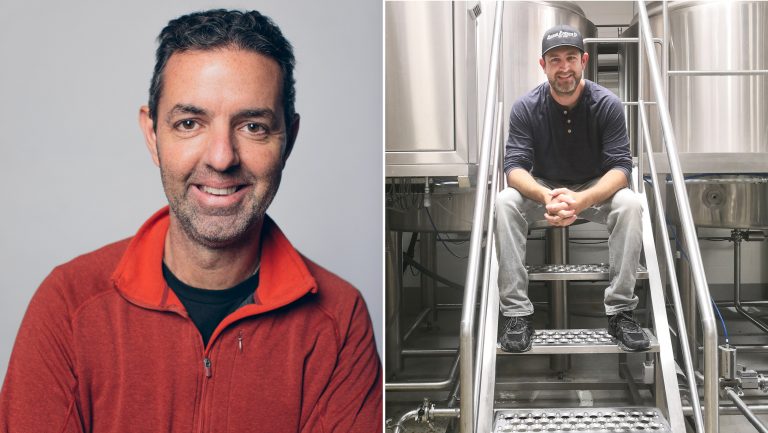
Ottaway says he finds that consumers don’t mind paying a little extra, though. Special Effects is expected to retail at $10.99 for a six-pack when it debuts in the Philadelphia market. Brandes agrees with that estimation of customers’ view. “Initially,” he says, “a lot of customers and accounts balked at our pricing, since historically the mass-produced non-alcoholic lagers are relatively inexpensive. However, once someone sees and tastes our beer, they realize we are truly a craft beer, albeit a non-alcoholic one, and the craft beer pricing is justified.” A six-pack of Bravus also sells for around $11.
Since Wellbeing Brewing in Maryland Heights, Missouri, began producing non-alcoholic beers exclusively, in Fall 2017—using vacuum distillation to gently remove the alcohol from its beer—the consumer reception has been positive. Jeff Stevens, who refers to himself as a non-alcoholic and was a sales and marketing professional before founding Wellbeing, hired distributors to sell Wellbeing’s beers throughout the Midwest. Although the brewery is just two years old, Stevens can’t keep up with the demand for Wellbeing’s three—soon to be four—styles, which sell for $9.99 to $11.99 per six-pack.

Strategies for On-Premise Sales
At one local Missouri brewery, which produces Wellbeing under contract, Stevens regularly sells a keg per week, mostly to the lunch crowd that dines at the brewery’s restaurant. Traditional restaurants have had success with the beer, too. “Putting us on a non-alcoholic part of the menu,” says Stevens, “has been great for retailers to increase their sales.”
Brandes hopes he’ll have that kind of demand at his company, too, once he hires distributors. He’s fielded some interest over the past few weeks, and he wants wholesalers nationwide to know one thing in particular: “There’s a huge demand for this product. A lot of people who can’t drink [alcohol] still love beer.”
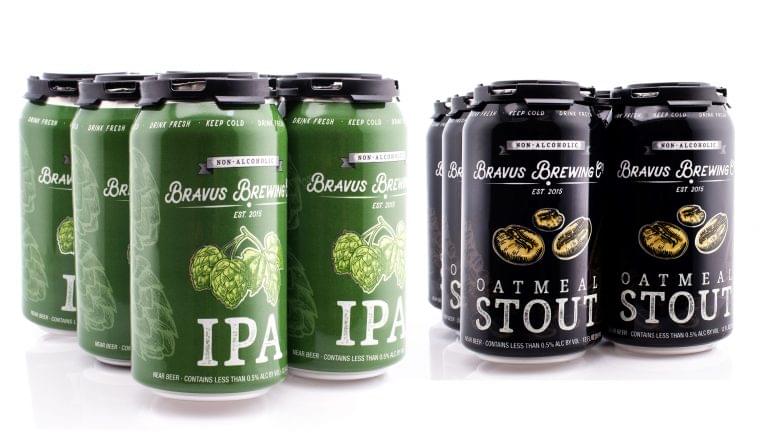
Anne Becerra, a Certified Cicerone and the beverage director at the Treadwell Park beer bar in New York City says that while she hasn’t seen a significant increase in alcohol-free beer on beverage menus yet, she expects that to change soon. She says there’s still some stigma surrounding the quality and flavor profile of non-alcoholic beer but that craft brewers are redefining the category. “I’m personally really excited to see more talented brewers making non-alcoholic [beers] that actually taste good,” she says. “I think having non-alcoholic options on a menu that are thought out and intentional is really important.”
Becerra adds that the way these offerings are integrated into a menu is key. “Not making [the beer] feel like something someone would be embarrassed [about]—or chastised for—ordering can make a real difference to both perception and actual sales,” she says. “I list my non-alcoholic beers right alongside the rest of the beers, provide the same amount of information about the style, where they come from, et cetera, and I’m actually [selling] way more than expected.” Becerra also points out that non-alcoholic beers can be a great option for a wide variety of drinkers—not just for teetotalers: “I’ve been seeing more and more friends in the beer industry use them as a way to extend their nights out and minimize hangovers—by alternating non-alcoholic beers with regular beers.”

Dispatch
Sign up for our award-winning newsletter
Don’t miss the latest drinks industry news and insights—delivered to your inbox every week.
Tara Nurin is the beer and spirits contributor to Forbes, the drinks columnist for New Jersey Monthly, a cohost of the What’s on Tap TV show, and a writer for publications like Food & Wine, Wine Enthusiast, Vice Munchies, and VinePair. She is a BJCP-certified judge, teaches a for-credit university beer class, and leads beer seminars for institutions like the Smithsonian. The Camden, New Jersey, homeowner has won two first-place awards from the North American Guild of Beer Writers, founded the state’s first beer education group for women, and volunteers as the archivist for the Pink Boots Society.

